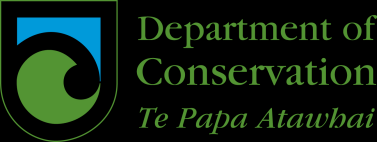
19-E-0416 / DOC 6005553
17 July 2019
Hannah Enderby
[FYI request #10576 email]
Dear Ms Enderby
Thank you for your Official Information Act request to the Department of
Conservation dated 20 June 2019. Y ou requested the following:
It has come to my attention that dozens and maybe hundreds of protected
Native birds namely Kaka, were seen falling out of trees following a 1080
poison operation on Pukaha Mt Bruce. Please send me all photographs, test
results and other information you hold relating to these crimes.
We note that you have not provided any dates in relation to the event you have
referred to and seem somewhat vague about even the number of kākā you understand
to have been involved.
We have been unable to locate any information that would suggest that any kākā fell
out trees at Mt Bruce following a 1080 operation and we have no evidence or reason
to believe this occurred.
Indeed, the scientific evidence we have establishes that the aerial application of 1080
dramatically improves the chances of kākā survival in the face of predation. We have
set out some examples and explanation below before providing our response to your
request.
Waitutu’s kākā ‘back from the brink’ after Fiordland 1080 operation
An endangered population of kākā in the Waitutu Forest in Fiordland, was boosted
by a record breeding season following a pest control operation with 1080 toxin. In
2010, the Department carried out an aerial possum control operation over Waitutu
Forest using cereal pellet baits with 1080.
Field teams made several monitoring trips into the area since the 1080 operation and
found that possum, rat and stoat numbers plummeted. Possum numbers reduced by
99.5% within the treatment area and the number of rodents and stoats reduced to a
level where they were no longer detectable with standard monitoring methods.
Field teams also found that female kākā that were radio-tracked prior to the
operation were thriving, with nests full of healthy chicks.
South Island kākā monitoring
The Department has studied the effects of predator control using aerial 1080 on
South Island kākā. Nesting in tree holes, female kākā and chicks are vulnerable to
attacks by stoats and possums. The Department’s scientists monitored kākā nests in
breeding seasons from 2010 to 2015 after aerial 1080 treatment and in an area where
1080 had never been used.
Conservation House -
Whare Kaupapa Atawhai
PO Box 10 420, Wellington 6143
Telephone (04) 471 0726, Fax (04) 381 3057

Results show that on average 55% of kākā nests were successful up to a year after
1080 treatment but less than 2% of nests produced chicks in the comparison area.
This result meant that 30 times as many kākā chicks were produced in the area a fter
1080 treatment, compared to the area where no 1080 was used. Adult birds also had
a much higher survival rate in the area where predators were controlled with 1080.
Information about 1080 generally
There is a large amount of information available on the internet about the important
role 1080 plays in the predator control programmes that are undertaken in New
Zealand.
The DOC website contains extensive information about how and why we use 1080 to
control predators.
Extensive scientific evidence about the use of 1080 is also available on the 1080: the
facts website which is a joint Federated Farmers – Forest and Bird initiative and can
be found at the following lin
k: http://www.1080facts.co.nz/research.html.
Fake 1080 news
There is also a lot of misinformation and fake news on social media about the use of
1080 in our predator control programmes. One such example can be seen here in
relation to kiwi that people claimed were killed by 1080 but which had actually died
of other causes:
https://www.doc.govt.nz/nature/pests-and-threats/methods-of-control/1080/fake-
1080-news/
It appears as though the information you have received about kākā falling out of trees
at Mt Bruce is also fake 1080 news. It is unfortunate that sometimes people make
things up to suit their own needs. We prefer to rely on evidence-based science and
research and hope that the information we have provided has assisted your
understanding of these issues.
Your OIA request
We are not aware of any incidents which involve kākā falling out of trees in the
Pukaha Mt Bruce area following a 1080 operation and do not hold any photographs,
test results or any other information to that effect. Therefore, we are refusing your
request under section 18(e) of the Official Information Act 1982.
Y ou are entitled to seek an investigation and review of this response by writing to an
Ombudsman as provided by section 28(3) of the Official Information Act.
Y ours sincerely
Amber Bill
Director Threats Biodiversity
for Director-General

